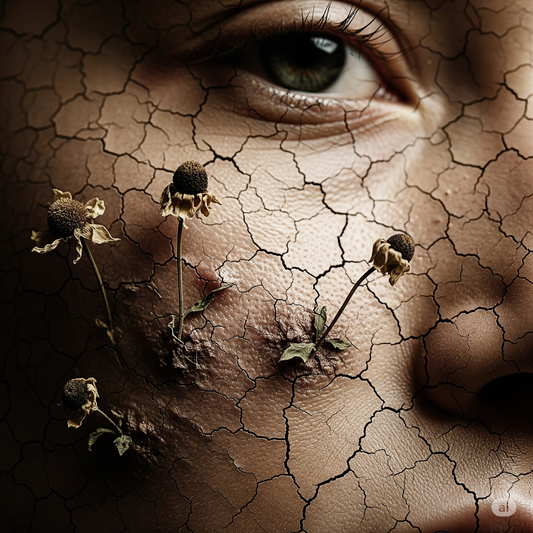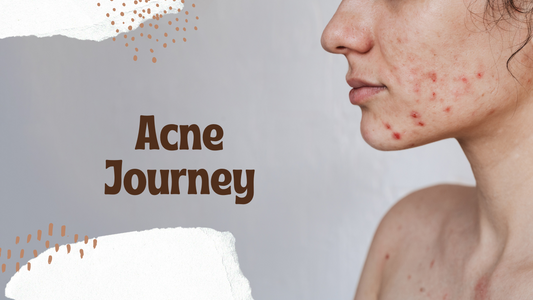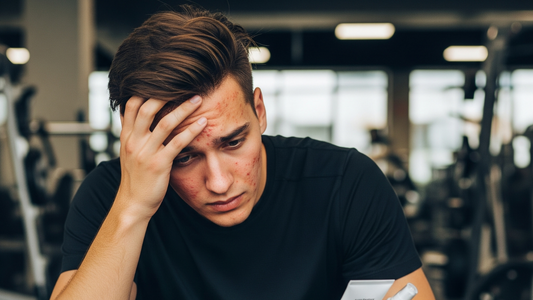Introduction
Acne is a major skin concern in India, especially among teenagers and young adults. It’s not just about breakouts—it can leave behind stubborn scars and pigmentation that affect confidence and self-image (Bharat et al., 2019). While there are plenty of treatment options available, chemical peels have become increasingly popular as a non-invasive way to tackle acne and improve skin texture.
But how effective are chemical peels for Indian skin? And what are the risks? Let’s break it down by looking at the different types of peels, their outcomes, and the specific challenges they present for Indian skin tones.
How Do Chemical Peels Work?
Chemical peels use exfoliating agents (chemicals that peel off) to remove the top layers of skin, helping to unclog pores, control oil production, and stimulate new skin growth. This makes them a great option for treating acne and post-acne pigmentation (Mohan et al., 2020). However, given the higher melanin content in Indian skin (Fitzpatrick skin types IV-V), choosing the right peel is crucial to avoid complications like post-inflammatory hyperpigmentation (PIH) and scarring (Sharma et al., 2022).
Types of Chemical Peels for Acne Treatment in Indian Skin
1. Superficial Peels: Best for Mild to Moderate Acne
Superficial peels are the safest option for Indian skin since they work on the topmost layer without causing deep damage. The most commonly used peel in this category is salicylic acid, a beta-hydroxy acid (BHA) that deeply penetrates pores and reduces oil production (Sharma et al., 2022). Other options include glycolic acid and lactic acid, but salicylic acid is often preferred because of its ability to dissolve oil and target acne at its root (Saxena et al., 2019). These peels are well tolerated, but mild redness or irritation can sometimes occur (Chandran et al., 2020).
2. Medium Peels: Best for Stubborn Acne and Pigmentation
Medium peels use stronger exfoliants like trichloroacetic acid (TCA) or high-strength glycolic acid to penetrate deeper into the skin. These peels are particularly helpful for treating acne scars and post-inflammatory hyperpigmentation (PIH) (Kumar et al., 2021). A 20-35% concentration of TCA is often used in Indian patients, showing good results for improving skin texture (Bawa et al., 2015).
However, the deeper penetration means a higher risk of side effects like redness, peeling, and temporary pigmentation changes. Proper aftercare and sun protection are essential.
3. Deep Peels: Risky for Indian Skin
Deep peels, like those using phenol, are designed to treat severe acne scars. While they can deliver dramatic improvements, they come with a high risk of hypopigmentation (skin lightening) and long recovery times. Because of the high melanin content in Indian skin, deep peels are rarely recommended (Prakash et al., 2020). Permanent pigmentation changes can be a major concern, making these peels a last resort.
Do Chemical Peels Work for Acne in Indian Skin?
Research shows that superficial peels (especially salicylic acid) are highly effective in reducing acne lesions, improving skin tone, and preventing future breakouts, with minimal side effects (Bawa et al., 2015).
For acne scars and pigmentation, medium-depth peels (TCA or glycolic acid) can show significant improvements, though multiple sessions (4-6 treatments) are usually needed for the best results (Saxena et al., 2019).
That said, chemical peels aren’t a miracle cure. They work best when combined with other acne treatments, such as topical retinoids, oral medications, or laser therapy (Mohan et al., 2020).
Challenges and Considerations for Indian Skin
-
Risk of Pigmentation Changes: Post-inflammatory hyperpigmentation (PIH) is a major concern for darker skin tones. Superficial peels are safest, while medium and deep peels carry a higher risk of pigmentation issues (Chandran et al., 2020).
-
The effect of the peel is temporary: Peels can improve acne temporarily, but they don’t treat the underlying causes like hormonal imbalances or excessive oil production. Maintenance treatments are often needed (Prakash et al., 2020).
-
Not for Severe Acne: Patients with active cystic acne or severe inflammation may not benefit much from chemical peels. In such cases, oral retinoids or antibiotics might be more effective (Sahu et al., 2020).
-
Cost of chemical peels: The cost of a chemical peel in Bangalore, India is about Rs. 2000 - Rs. 4000 per session and dermatologists would often recommend about 4 - 6 sessions on an average.
Final Thoughts
Chemical peels can improve acne and pigmentation in Indian skin—but only when used correctly. Salicylic acid peels are the safest and most effective option, while medium-depth peels can help with scars and pigmentation when used carefully. Deep peels are generally not recommended due to their high risk of complications.
For long-term success, peels should be part of a comprehensive skincare routine, including sunscreen, gentle skincare products, and prescription treatments.
Using your own prescription strength personalised formulation that contains ingredients such as tretinoin and azelaic acid is a great alternative as it can help in the exfoliation, declogging of pores, reduction in sebum production very efficiently and continuously.
References
Bawa, M., Sethi, A., & Singh, M. (2015). Trichloroacetic acid chemical peeling for acne scars in Indian patients: A review. Dermatologic Therapy, 28(6), 332-340.
Bharat, R., Jindal, D., & Sharma, A. (2019). Acne vulgaris in Indian adolescents: Prevalence, risk factors, and management strategies. Journal of the Dermatology Society of India, 27(2), 128-135.
Chandran, R., Rajan, M., & Mohan, M. (2020). Chemical peels for acne in Indian patients: Efficacy, safety, and post-treatment management. Indian Journal of Dermatology, Venereology, and Leprology, 86(4), 445-452.
Kumar, V., Tiwari, A., & Yadav, S. (2021). Efficacy of TCA peels for post-acne scars in Indian skin: A clinical study. Indian Journal of Aesthetic Dermatology, 15(2), 98-103.
Mohan, M., Arora, A., & Sharma, S. (2020). Effectiveness of salicylic acid peels in the treatment of acne vulgaris in Indian patients. Journal of Cosmetic Dermatology, 19(3), 679-685.
Prakash, G., Raghavendra, R., & Yadav, R. (2020). Chemical peel for acne scars: A review of current practices in Indian dermatology. Journal of Cutaneous and Aesthetic Surgery, 13(2), 103-108.
Sahu, S., Jaiswal, S., & Yadav, S. (2020). Chemical peels in the management of acne and acne scars in Indian skin types. Indian Journal of Dermatology, Venereology, and Leprology, 86(5), 557-561.
Saxena, A., Agarwal, R., & Sood, A. (2019). Role of salicylic acid peels in the treatment of acne vulgaris in the Indian population. Journal of Clinical and Aesthetic Dermatology, 12(1), 48-53.
Sharma, N., Sethi, S., & Gupta, S. (2022). Chemical peels for acne in Indian skin: A review of mechanisms, efficacy, and safety profiles. Dermatologic Clinics, 40(2), 213-220.





